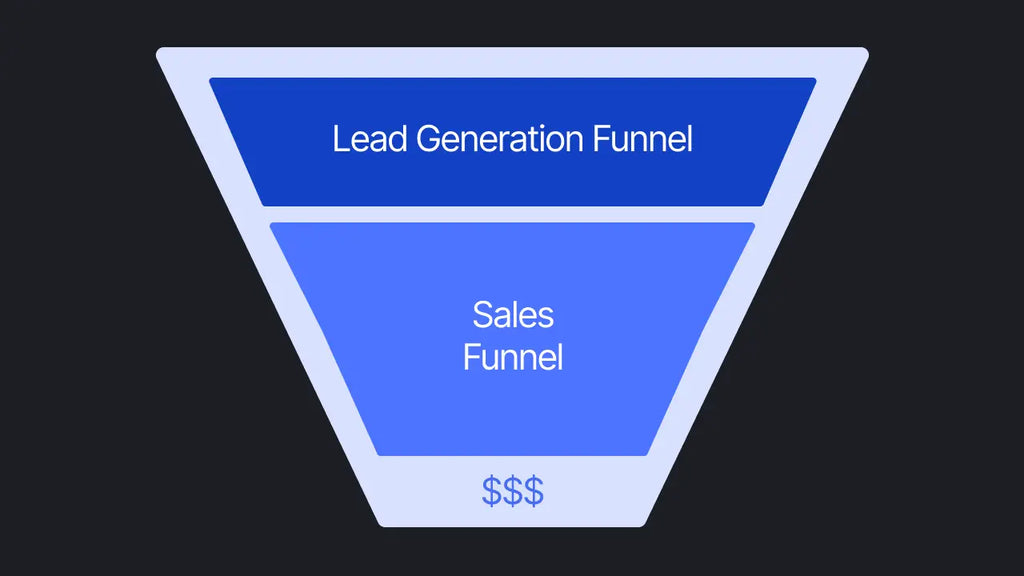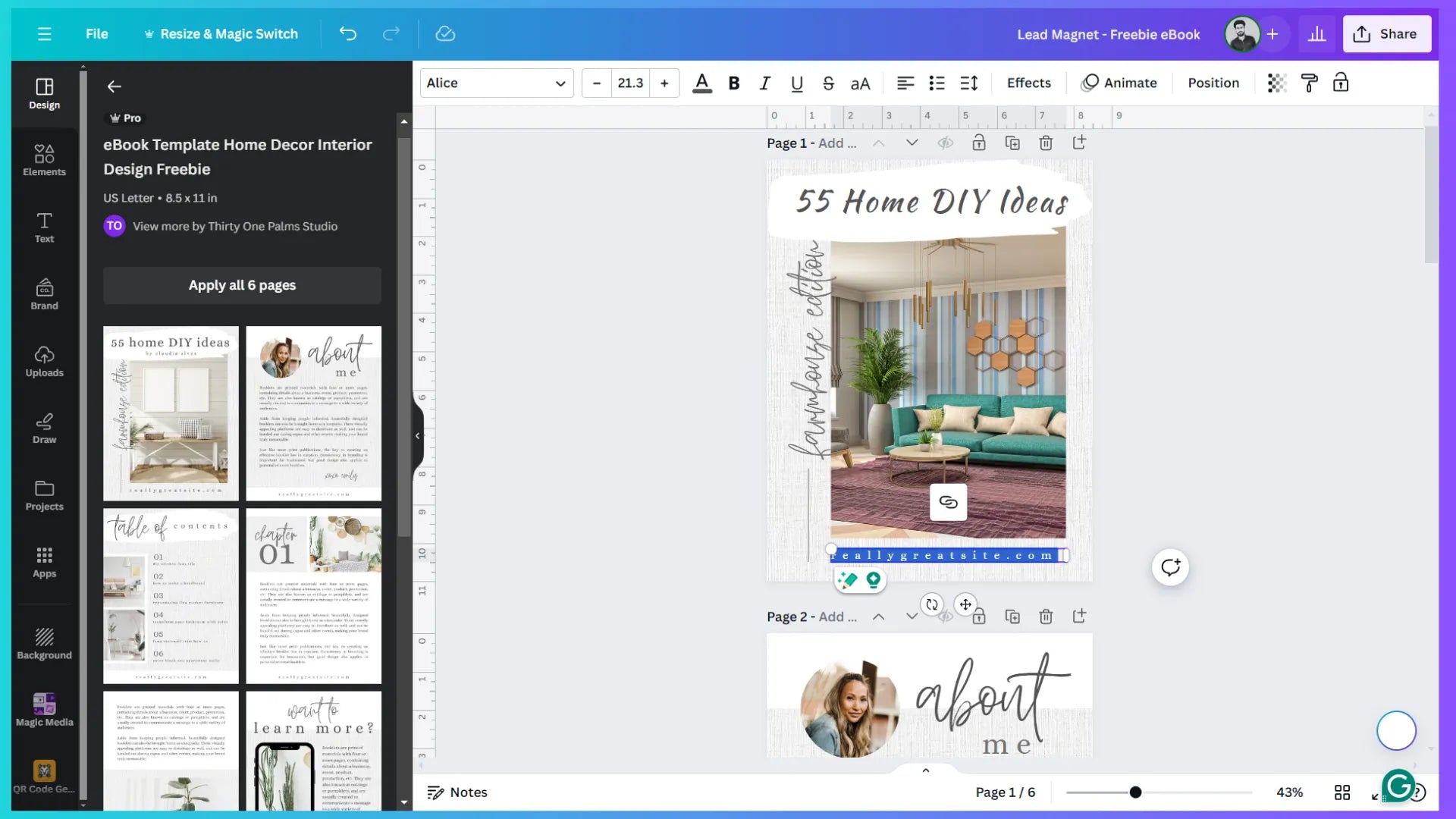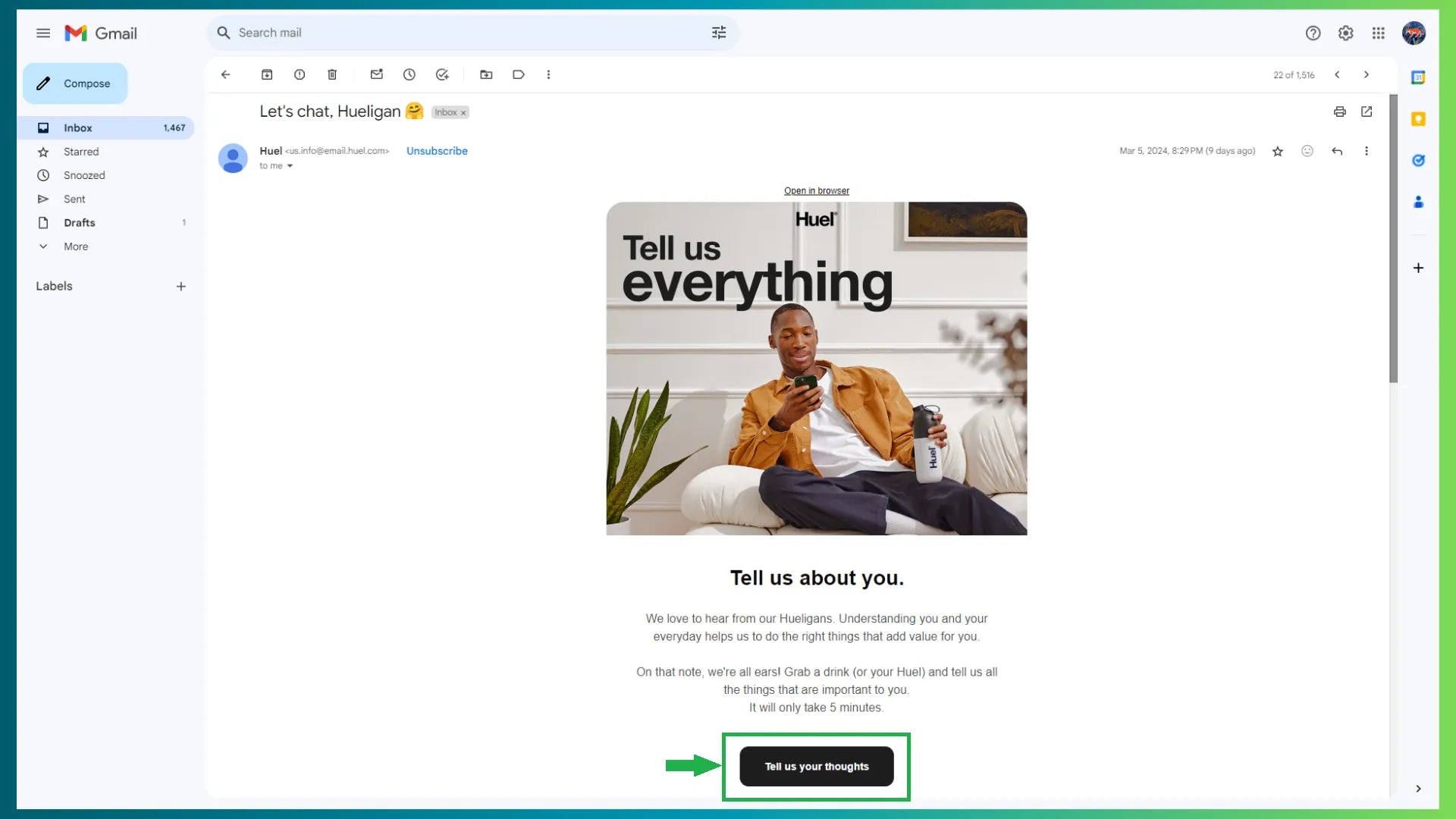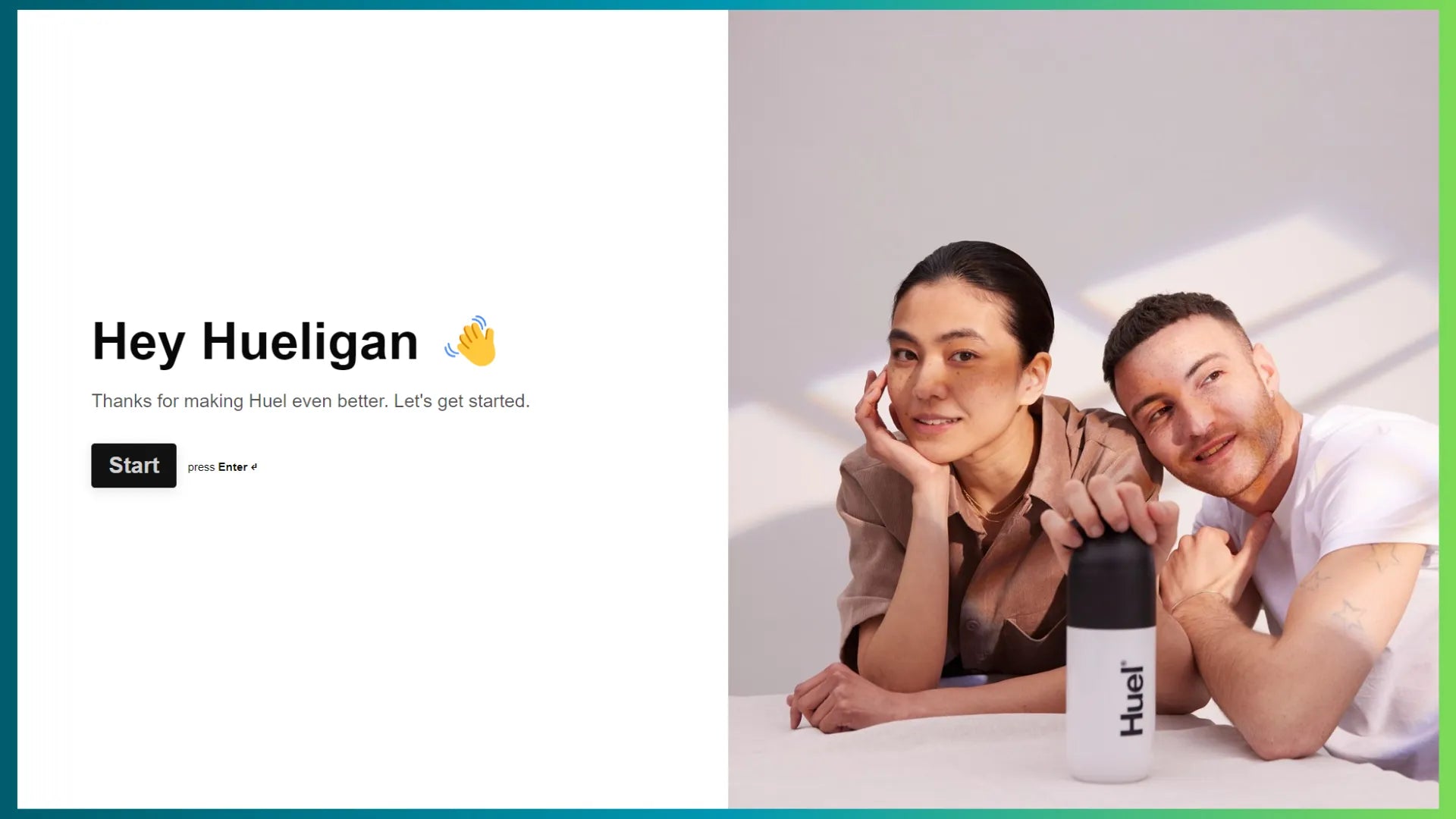How to Build a Lead Generation Sales Funnel + Pro Tips [2024]

Lead generation is the fuel that your business needs to keep running.
In other words, it’s a customer acquisition strategy that will help you bring in potential customers and increase your sales.
But the thing is, it’s also one of the toughest parts of running an eCommerce business — because customers have so many options and too little time to make the buying decisions.
The solution — implement a robust lead generation sales funnel strategy.
In this blog post, we’ll walk you through the step-by-step guide to building your lead generation sales funnel along with best practices and examples.
The Basics of Lead Generation Sales Funnel
“Lead generation sales funnel” — sounds like quite a long phrase, right?
Let’s break it down into small different components:
|
# |
Term |
Brief meaning |
|
1. |
Lead |
A potential customer |
|
2. |
Lead generation |
Collecting contact info of potential customers |
|
3. |
Lead generation funnel |
The system to generate leads |
|
4. |
Sales funnel |
The system to convert leads into customers |
|
5. |
Lead generation sales funnel |
The extensive system combining #3 & #4 |

Now, let’s go a bit deeper to understand these terms in more detail:
What is a Lead?
First off, a lead is a potential customer who may have some level of interest in buying your products or services but has not taken that action yet.
Anyone falling under your ideal customer profile (ICP) could be a lead for your business.
What is Lead Generation?
“Lead generation” is the process of collecting the contact information (typically email address or phone number or both) of such leads for marketing and sales purposes.
What is a Sales Funnel?
A sales funnel is a marketing strategy created to walk customers through a journey—consisting of subsequent stages—from making them aware of your product/service to enticing them to buy it.
These stages include awareness, interest, evaluation, desire, sale, and then, retention (also referred to as “repurchase” or “loyalty”).
What is a Lead Generation Funnel?
In your sales funnel, at the top of the funnel, you need to create “awareness” among potential customers (aka leads). Once they become aware and interact with your brand, you can collect their contact information through a lead magnet (free digital product or offer) and move them to the “interest” stage of the sales funnel.
The above system of generating leads for the sales funnel is called the lead generation funnel. So, we can say that the lead generation funnel is a part of the sales funnel only.
What is the Lead Generation Sales Funnel?
Now we know what a lead generation funnel and sales funnel are.
When you combine both of those funnel systems to work together, it becomes your “lead generation sales funnel”.
Lead generation sales funnel is the extensive process of generating leads, nurturing them through various stages of the sales funnel, and finally converting them into paying customers and retaining them as well.

Lead Generation Sales Funnel Stages
The lead generation sales funnel covers these three hierarchical levels and can go up to six stages. Depending on the type of business, the number of stages may vary — meaning, it could be a 4-stage or 5-stage funnel as well.
|
Funnel Levels |
Funnel Stages |
Strategies |
|
Top of the Funnel (TOFU)The entry point of the entire funnel. This is where the lead generation effort starts. |
Awareness |
Raise awareness to bring traffic to your website/landing page through different channels or marketing strategies. |
These strategies include content marketing, social media marketing, search engine optimization, paid ads, and so on. |
Middle of the Funnel (MOFU)In the middle of the funnel, you get the leads interested and engaged with your brand through content and other digital assets. |
Interest |
Once you've got a lead in the funnel, you need to spark interest in them to make them stay with you. |
For an eCommerce brand, here are some strategies to gain interest and engagement from your leads: website copy, product collections, quizzes, social proof, and community. |
Evaluation |
Offer leads the resources they need to evaluate your product. They may even compare your product or service with your competitors. Highlight how your product is better. |
You can help customers evaluate and make a decision with digital assets like eBooks, case studies, newsletters, video tutorials, etc. |
|
Bottom of the Funnel (BOFU)At the bottom of the funnel, things get more focused on the business. Because at this stage, leads are likely to take action. And after all, you need to make sales and profits to stay in the market, right? |
Desire |
Evoke the desire to purchase your product or service with the help of a conversion-optimized landing page. |
Promote and highlight your best offer, the one that customers just can’t resist, and create urgency to take action. |
Sale |
This is one of the last stages in your funnel. Here, the customer has made the final decision and goes to complete the purchase. |
Before they complete the payment on the checkout page, don’t forget to upsell or cross-sell products to increase your average order value (AOV). |
|
Retention |
After the completion of the sale, your next goal should be to ensure that the customer keeps coming back to your brand for repeat purchases. Most importantly, don’t forget to ask their feedback. |
Use strategies like email marketing, a loyalty program or referral program, subscription packages, and so on. |
|
Learn more: How to Build An eCommerce Sales Funnel Strategy [+ Examples]
How to Build a Lead Generation Sales Funnel
Here’s the step-by-step guide you need to create a high-converting “lead generation sales funnel”:
Step 1: Research and Identify Your Target Customers
First things first, your target customers.
Identify what problems or challenges they’re facing in their personal or professional life or business. This will help you in the next steps when you’ll need to create content, copy, and lead magnet to grab their attention and interest.
Learn more:
Transforming Words into Wealth: 10 copywriting hacks for the best conversion
Most importantly, create something that’ll help them resolve the problem.
How do you do that?
- Talk to your existing customers first — What brought them to you?
- Ask for their feedback, how your product is helping them, and what more they’d love to see from you.
- Also, ask about what channel they used to find you and use that in your lead-generation strategies.
- For example, run a survey to ask them how they found you. If 60-70% of your audience says, through Facebook, you know which social media platform you need to focus more on.
- Go to social media and check out the pages that are likely to have followers similar to your ICP.
- Analyze their interactions and find out a common problem they’re sharing and trying to sort out.
- Figure out how you can solve that problem through your lead magnet or initial offer.
- Search “question-answer forums” like Quora or Reddit.
- Again, follow the above strategy to find a common problem of your ICP and implement it in your strategy.
Step 2: Create and Offer Lead Magnet(s)
This is one of the crucial steps in the lead generation sales funnel.
A lead magnet is a free product (typically a digital product) that is offered in exchange for the contact information collected with the signup.
But the catch is — your free product has to have a value worth paying for.
After all, if your lead magnet is NOT powerful, why would a customer care to go further in your funnel?
But you may ask — what to create for the lead magnet? Go back to your research phase, see what the problem statement was, and create a lead magnet accordingly.
OR simply ask your social media followers what they would love to receive as a free resource and then use it to attract leads.
Some good examples of lead magnets:
- eBooks, guides, whitepapers
- Worksheets, checklists, cheatsheets
- Webinars, consultation calls
- Templates
- Courses
- Community membership
…. and so on.
Pro tip: You can use a graphic design tool — Canva — to create digital products for your lead magnet. Canva makes it easy to create eBooks, whitepapers, checklists, or any PDF document with templates that look professional. You can easily insert your content and customize the template as per your branding.

Step 3: Create a Landing Page
A landing page is a standalone webpage specifically designed for marketing and advertising purposes. It’s the page visitors land on after clicking a social media post or an ad.
It’s a powerful tool that can be used at various stages of your lead generation sales funnel. For example, create one landing page to promote your free lead magnet, and then, create another one to send traffic to your paid product or service.
One important thing to keep in mind here is that your landing page copy may vary to some extent in both cases mentioned above.
When writing copy for your free lead magnet, you would want to emphasize what value it offers to the potential leads — and don’t try to sell your product just yet. Because if you do, it might annoy your potential leads.
And then, when creating a landing page for your main paid offer, focus on the benefit your product offers and explain your unique selling proposition (USP). On that second landing page, you’ll need more social proof elements because now you’re asking them to buy something.
Pro Tip: Use a landing page builder like GemPages to create high-converting landing pages. GemPages helps you create landing pages with advanced and AI-powered features like the image-to-layout feature, professionally designed templates, and eCommerce elements.

The Ultimate Landing Page Checklist You Need
Top Lead Generation Landing Page Examples for Your Shopify Store
Step 4: Implement Marketing & Ads Strategies
So, now you have an irresistible lead magnet ready.
You have a stunning landing page with a call to action (CTA) for the lead magnet sign-up.
But how do you want to bring potential leads to that landing page?
There are mainly two methods to go about it:
- You could go for organic marketing strategies such as content marketing, social media marketing, and search engine optimization.
- These strategies take time but give you a great return on your investment for a long time.
- This can help you bring some quick traffic and help you generate leads in a short time. However, you need to be ready to spend some money on testing and running your ads.
- Go for paid ad campaigns such as running pay-per-click ads on Facebook and Google, or any other platform that’s most relevant to your audience.
You don’t necessarily need to stick to one method. You can go even with a combination of both — paid and organic traffic acquisition methods. The goal is to make your top-of-the-funnel full of leads which you can further keep moving in the subsequent stages of the sales funnel.
Note: At this point in your funnel, the “lead generation funnel” has done its job to get you the leads. Now, you’ll move forward with those leads into the “sales funnel” part where you’ll focus on converting those leads.
Step 5: Manage and Nurture Your Leads
Once you’ve started generating leads, it’s time to nurture them through different marketing strategies. But before that, you might want to sort all the leads into different lead types for more personalized marketing.
5.1 Sort Common Types of Leads
Here are the common types of leads:
- Cold Leads
These are potential customers (aka leads) who have not proactively shown interest in your products or services but might be interested in them if pitched or promoted to them. Meaning, your ideal customer profile (ICP).
- Warm Leads
Warm leads are the potential customers who are aware of your brand’s products or services. They may have shown slight interest in your offerings but are not ready to purchase yet.
- Hot Leads
These leads have shown keen interest in buying your product or service and are just a step away from becoming your customer.
- Information Qualified Lead (IQL)
These are the leads seeking some information relevant to your product or service and have tried to access this information in the form of an eBook or any other lead magnet.
- Marketing Qualified Leads (MQL)
When IQLs move forward in the funnel and show an interest in your product or service, they become MQLs. For example, once they’ve signed up for a free product sample, they become MQLs.
- Sales Qualified Leads (SQL)
SQLs are the leads that have shown a great interest in buying your product or service and are ready to talk with your sales team to close the deal.
Apart from these, you’ll also hear some other terms like dead leads, product-qualified leads (PQL), sale-ready leads (SRL), and so on. But we’ve covered the key types of leads for eCommerce businesses.
Once you have identified and organized your leads properly, it becomes easy to convert warm leads into hot leads or convert MQLs into SQLs.
5.2 Use CRM software if needed.
Customer relationship management (CRM) is software that helps businesses organize, track, and manage all information of all their leads. It can also help track all communications—right from the initial interaction/sign-up to closing the customer and beyond—within a centralized system.
Businesses require a CRM when they need to manage a large number of leads. So, identify if your business needs CRM software.
If you’re using Shopify, you can install CRM apps from the Shopify app store.

5.3 Create Email Marketing Campaigns
Email marketing is one of the most important strategies in this step.
Not all leads entering your funnel will convert immediately, some will. And some leads will just keep lurking around and following your content until they find a solid reason to buy your product or service.
Email marketing helps you convert such warm leads into hot leads and eventually make them your customers. Create email marketing campaigns to nurture your leads. Use automation to set actions based on certain triggers.
Huel is one of the best sales funnel examples when it comes to using email marketing campaigns. The brand doesn’t just simply focus on promoting its products but also encourages the audience to interact and share more about themselves.

When clicking on the CTA button — “Tell us your thoughts” — users are taken to the survey form where they can fill in the information.

Pro tips: Avoid sending the same email to the bulk audience. Use segmentation. Try to collect more information from your customers about their likes and preferences through different methods. And then, implement as much personalization as possible based on the collected information.

Step 6: Implement Conversion Strategies
It’s time to implement your top conversion strategies.
At this stage, you should be focused on:
- Converting your leads into your customers with your best offer
- Using upselling and cross-selling strategies to increase your AOV
- Building loyalty and long-term relationships with your customer
Keep in mind — finding new leads is hard, and thus, you should try to convert as many leads as possible from what you already have.
Once again, creating a landing page focused on conversion can help you achieve your ultimate goal, i.e., getting sales from your leads.
Step 7: Analyze the Results for Improvement Opportunities
When implementing any strategy in your business, you must track and analyze the results to ensure it’s meeting the benchmarks.
Based on the analysis, identify the areas where your strategies could be improved and execute the needed actions.
Your funnel might have leak issues, meaning the leads moving out of the funnel without making a purchase. So, you must monitor the funnel performance at different stages and fix any leak issues.
For example, let’s say your social media post focuses on a specific product and the CTA button is leading to the website’s homepage instead of a link going directly to the mentioned product’s landing page. The customer will then need to search for that product, and if the customer exits your website without taking any action, you’ll lose that lead.
Best Practices for Lead Generation Strategies
-
Design the landing page with conversion elements.
Your landing pages need to have elements that make customers go click that CTA button and take action. Here are the key elements that drive conversions on a landing page:
- Copy: “Why should I sign up for whatever you’re offering?” Address the “What’s in it for me?” factor and let customers know the value they’ll get through your product — even if it’s a freebie.
- Social proof: Present the social proof in the form of customer reviews, expert statements, press mentions, etc. Also, user-generated content (UGC) can work as a social proof.
- Urgency: You can use GemPages to insert elements like a countdown timer, announcement banner, and popups.
How to Create A Striking Landing Page on Shopify
Top Lead Generation Landing Page Examples for Your Shopify Store
-
Create high-quality content.
If your content is not up to the mark in terms of value and quality, you won’t be able to move leads forward in the funnel. Even if they do, they would be less likely to be high-quality leads.
Also, don’t just keyword stuff your content to rank in search results. Keywords are important but need to be used mindfully. If you can, hire professional writers to write high-quality content for you.
-
Use SEO as a crucial part of your strategy.
While you can go heavy on running ads in the beginning, you know it’s a costly strategy to acquire new leads. In the long run, SEO can help you attract a large amount of leads at an affordable cost.
Start a blog and publish content regularly. Focus on delivering value and follow the SEO best practices to rank your articles higher in search results.
-
Strategically place the lead magnet.
Don’t place your lead magnet where people would have to go and find it.
Create a dedicated section or a pop-up for the lead magnet on your homepage — because that would be the most visited page on your website. Also, you can share it on your social media.
-
Keep the signup form to the point.
Ask for as minimum information as possible. If you just need email, create only two fields: “First Name” and “Email”. People tend to sign up immediately if only email is required.
That said, if sales calls are a crucial part of your strategy, ask for the phone number. If you’re targeting established businesses only, ask for the website and professional email to filter out low-quality leads.
Create different versions of the form and perform A/B tests to see which form gets the most signups.
Start Building Your Lead Generation Sales Funnel
Creating a solid lead generation sales funnel strategy allows you to grow your business with a small investment.
Also, you can automate your lead generation sales funnel strategy to get a high return on investment (ROI) with limited resources.
So, what are you waiting for? Start working on your overall strategy, lead magnet, and landing pages to build a solid funnel.
If you’re new to the Shopify ecosystem or GemPages, join our GemPages Facebook community and hang out with other entrepreneurs and GemPages experts to learn from real-life experiences.




 Facebook Community
Facebook Community Change Log
Change Log Help Center
Help Center







![How to Build a High-Converting Facebook Ads Funnel [2026]](http://gempages.net/cdn/shop/articles/Facebook_Ads_Funnel-thumb_7a583f1a-80ec-4b88-bdd8-3724e5fb0740_480x480.webp?v=1767078937)




